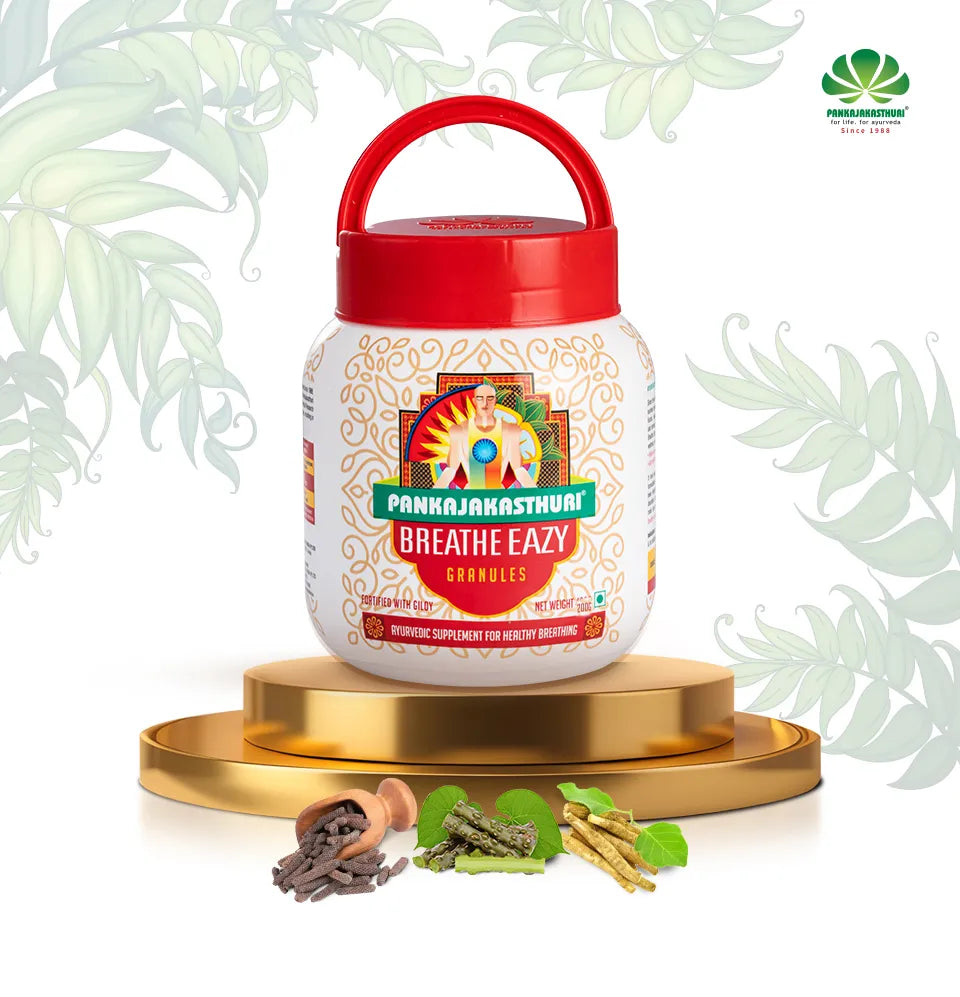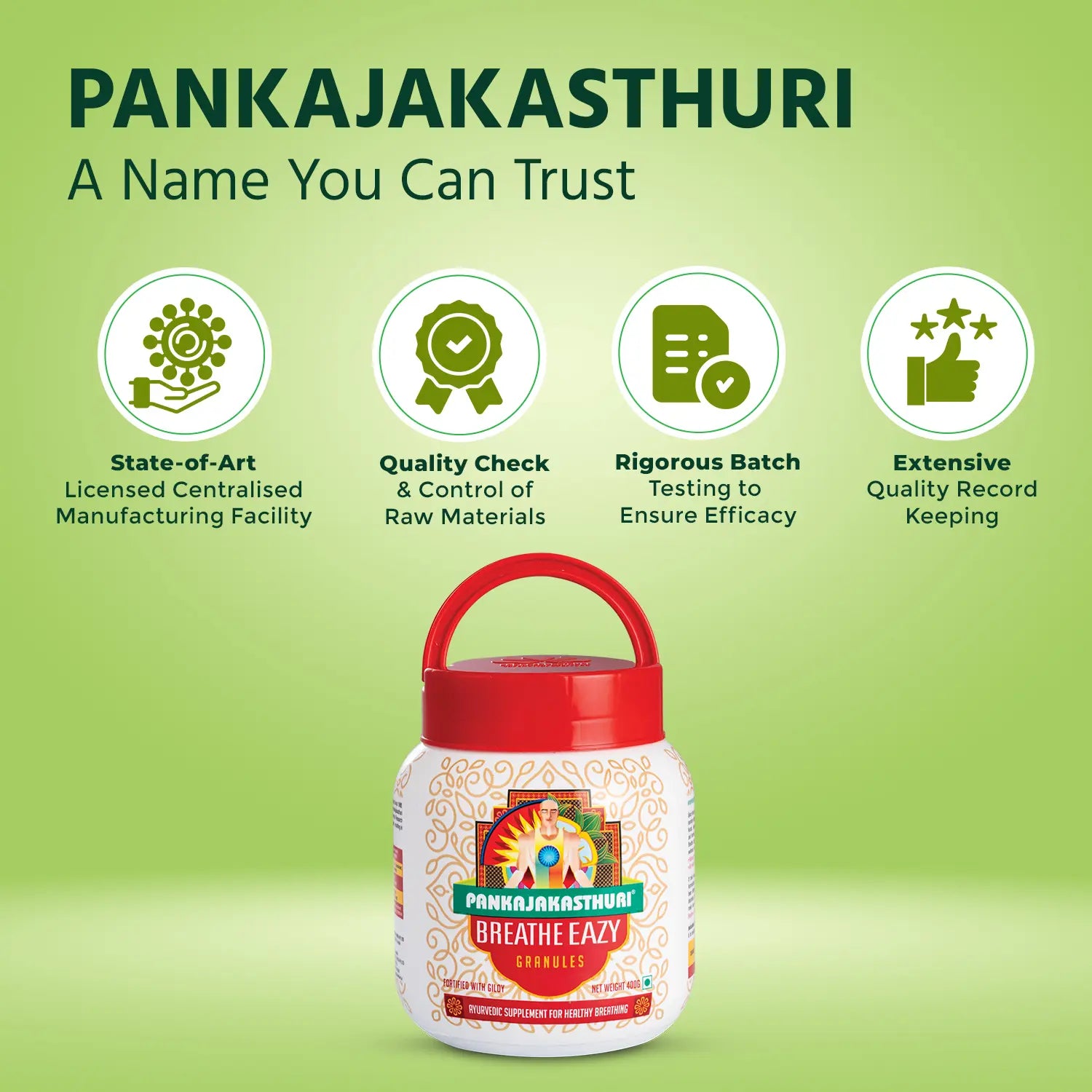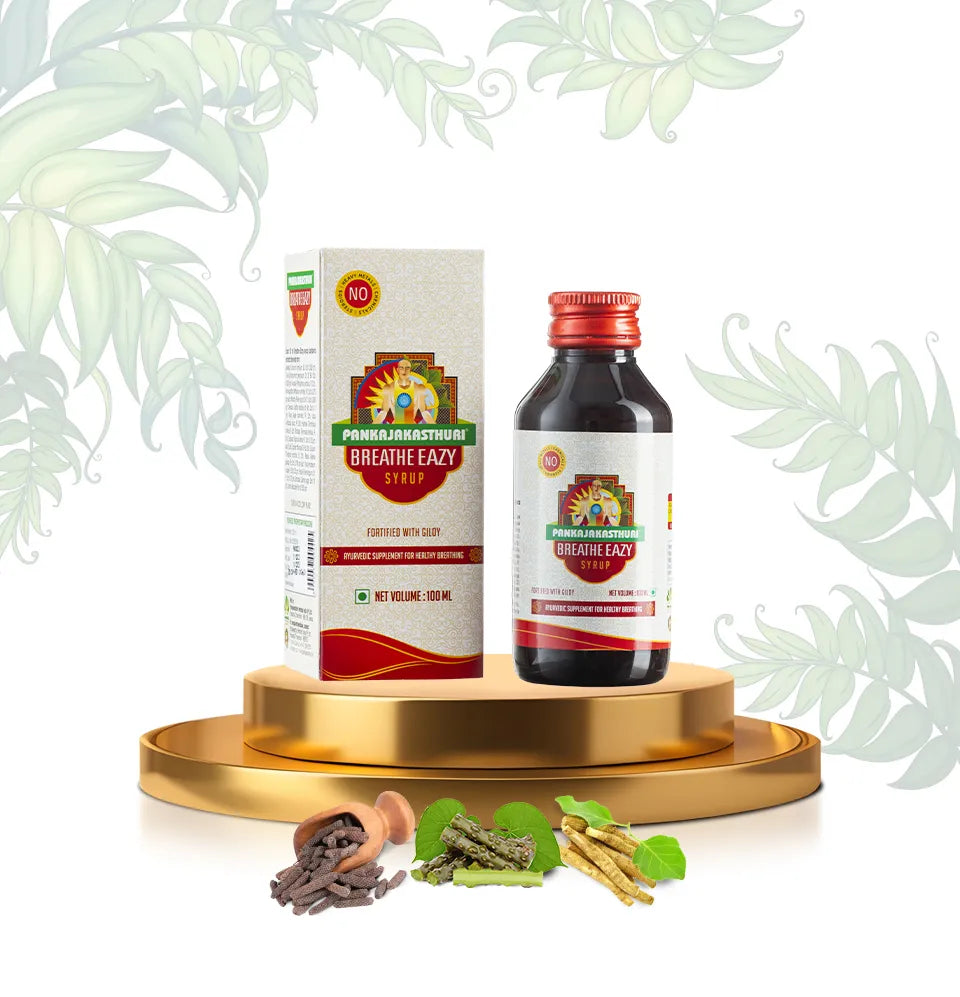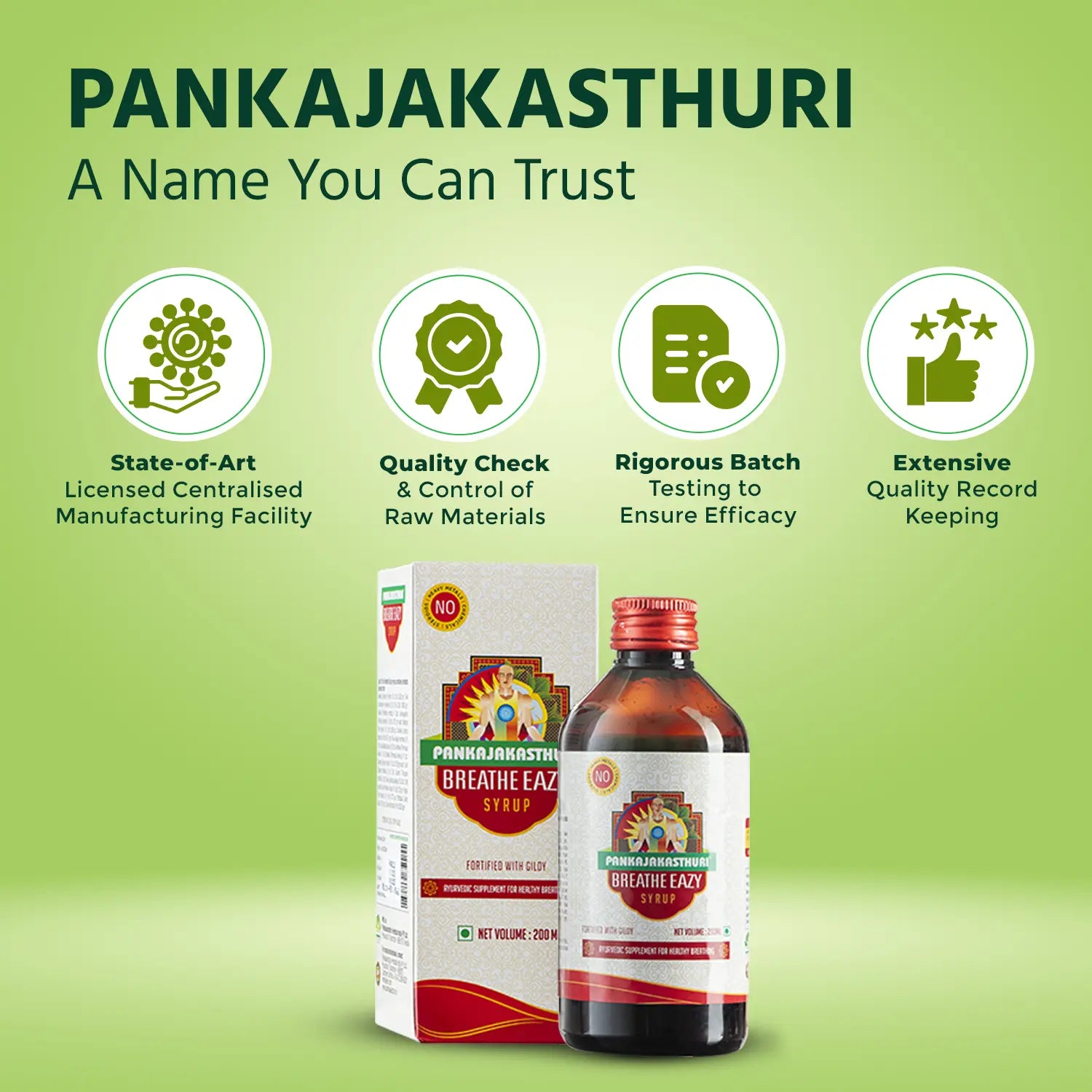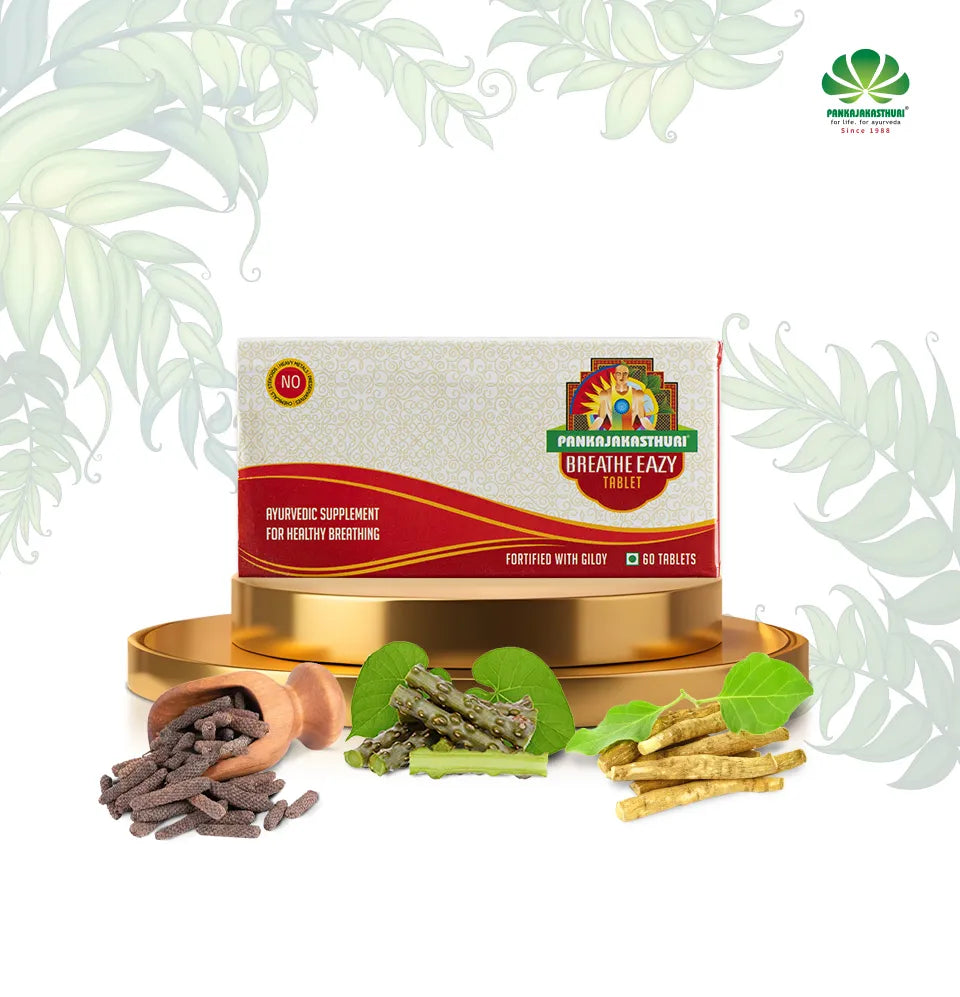
Breathe Easy This Monsoon: Ayurvedic Solutions for Breathing Problems and Allergies

The Monsoon Season and Your Lungs
The monsoon season brings a welcome respite from the scorching summer heat, but with it comes a wave of health challenges – especially for your lungs. The increased humidity, dampness, mold growth, and rising levels of airborne pollutants during this season can trigger or aggravate a host of respiratory conditions. For individuals with asthma, bronchitis, COPD, or seasonal allergies, the monsoon can become a difficult time to manage health.
In this blog, we explore why breathing issues intensify during the monsoon, how to manage them effectively, and how both modern medicine and Ayurveda offer preventive and therapeutic solutions.
1. Why Breathing Problems Worsen During the Monsoon?
-
High Humidity and Airborne Allergens
Monsoon air is heavy and moist. While it may feel refreshing, it traps allergens like dust mites, mold spores, and bacteria, increasing exposure and respiratory sensitivity. -
Indoor Mold and Poor Ventilation
Damp walls and poorly ventilated rooms become breeding grounds for mold and fungus. Mold spores, once airborne, can cause severe reactions – especially in children, the elderly, or those with pre-existing lung conditions. -
Sudden Weather Changes
Frequent shifts in temperature can constrict airways and trigger asthma flare-ups and bronchitis symptoms.
2. Understanding the Root Causes of Breathing Problems
Common causes of difficulty in breathing during monsoon are:
- Asthma: Symptoms worsen when humidity rises, triggering bronchial spasms.
-
COPD: Damp weather aggravates airway inflammation and makes breathing difficult.
-
Allergic Rhinitis: Triggered by pollens, dust, and mold, leading to nasal congestion and sneezing.
-
Respiratory Infections: Pneumonia and bronchitis become more common and weaken lungs.
- Pulmonary Hypertension and Embolism: Less common but serious conditions worsened by weather stress and infections.
Role of Humidity and Air Quality: High moisture levels trap allergens and pollutants, worsening symptoms. Sudden temperature shifts, mold exposure, and indoor air pollution compromise respiratory health.
3. Breathing Problem Treatment: A Step-by-Step Approach
1. Consult a Healthcare Provider
-
Lifestyle Measures:
- Maintain a healthy weight and eat antioxidant-rich food.
- Practice stress management with breathing exercises.
- Quit smoking and ensure good sleep hygiene.
- Stick to prescribed medications and inhalers.
- Seasonal check-ups to adjust asthma or COPD plans.
- Stay updated on flu and pneumonia vaccines.
2. Maintain a Dry and Clean Indoor Environment
- Improve ventilation with exhaust fans and open windows.
- Dust and vacuum regularly to eliminate allergens.
- Use air purifiers in high-pollution areas.
- Natural Aids: Humidifiers (if air is too dry), steam inhalation for congestion.
3. Be Cautious Outdoors
- Avoid pollen, dust, and smoke exposure.
- Wear a mask in polluted or allergen-heavy areas.
- Carry medication and rescue inhalers.
- Avoid perfumes and sprays that aggravate symptoms.
4. Maintain Hygiene to Prevent Infections
- Wash hands frequently and sanitize surfaces.
- Cover mouth when coughing/sneezing.
- Change wet clothes quickly and wash them.
- Take steam inhalation with eucalyptus oil.
- Use herbal decoctions like Tulsi-Kadha.
5. Eat Right – Ayurvedic Diet for Lung Health
A strong immune system begins with a strong gut and balanced doshas.
-
Ayurveda Recommendations:
- Pacify Vata: Warm cooked meals with ginger, cumin, and black pepper.
- Calm Pitta: Cooling foods like coconut water and sweet fruits.
-
Balance Kapha: Light, warm foods; avoid cold, heavy meals.
- Incorporate: Fish, flaxseeds, walnuts, oranges, spinach, ginger tea, tulsi water, turmeric milk.
- Avoid: Excess dairy, cold drinks, fried, overly salty/sour foods.
6. Be Mindful of Food Allergens
- Common allergens: Dairy, nuts, shellfish, eggs.
- Read labels carefully and avoid cross-contamination.
7. Ayurvedic Medicine for Breathing Problem Relief
-
Asthma/COPD: Agastya, Haritaki, Avaleha, Sitopaladi Churna
-
Cough: Yashtimadhu, Taleesapatradi Choornam
-
Allergic Rhinitis: Anu Taila (nasal drops), Trikatu
- For Immunity: Chyawanprash, Ashwagandha, Guduchi, Tulsi, Pippali
Home Remedies:
- Steam inhalation with eucalyptus or camphor oil.
- Warm turmeric milk for throat irritation and immunity.
- Saltwater gargle for mucus relief.
- Herbal Decoction Recipe: Boil 2 cups water with tulsi leaves, ginger, and black pepper. Reduce to half, strain, add honey, and drink warm once or twice daily.
8. Breathing Exercises and Pranayama
-
Anulom Vilom: Alternate nostril breathing to balance energy and clear nasal passage.
-
Bhramari (Bee Breath): Produces a humming sound that relaxes nerves and supports lung health.
- Kapalabhati: Cleansing breath that strengthens lungs and improves oxygen supply.
Conclusion: Stay Clear and Calm with Monsoon Ayurveda
Monsoon doesn’t have to mean misery for your lungs. By combining modern medical strategies with Ayurvedic wisdom, you can manage respiratory challenges with confidence. Maintain hygiene, eat a balanced diet, use herbal remedies wisely, and incorporate regular breathing practices. Stay dry, stay healthy, and breathe easy this monsoon!








